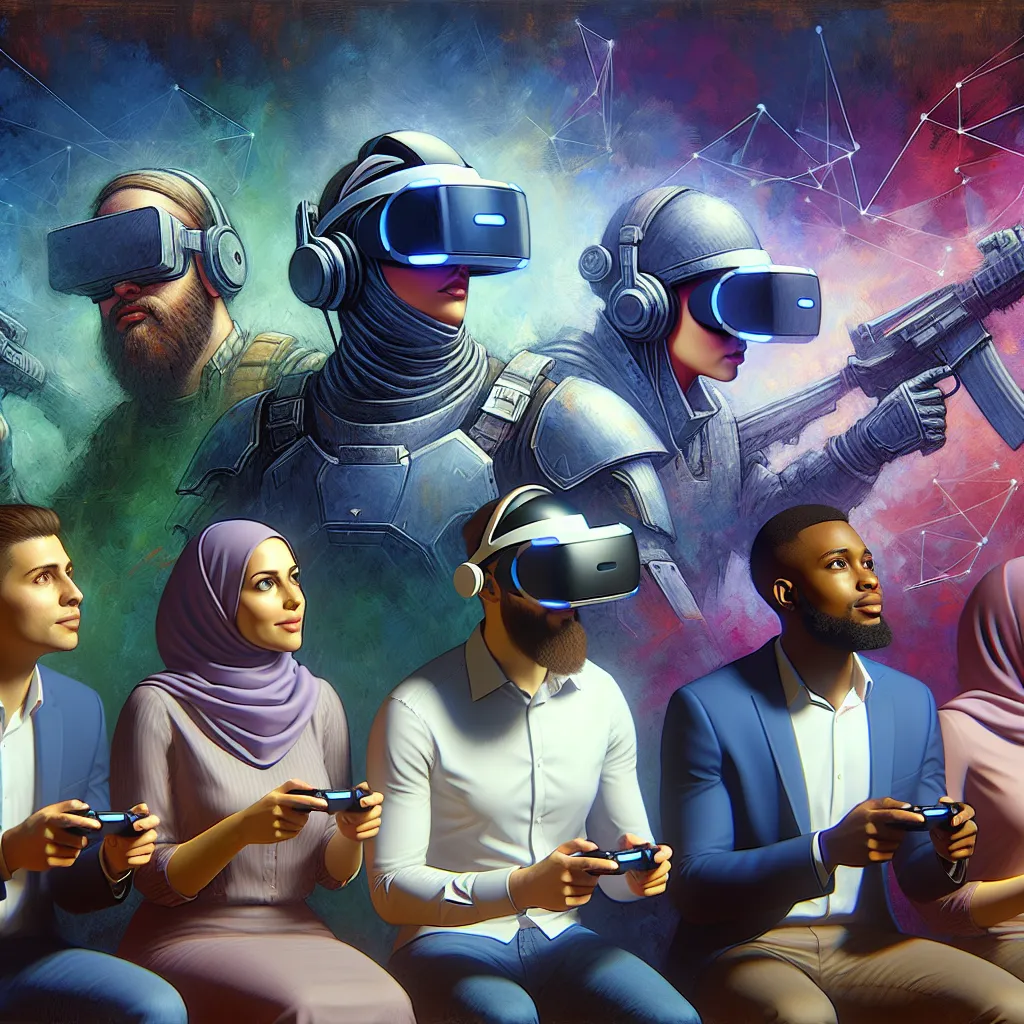The Early Days: From Pong to Pac-Man
When we think of the early days of video games, images of simple graphics and iconic classics like Pong and Pac-Man immediately come to mind. These games, which first gained popularity in the 1970s, marked the beginning of a revolution in entertainment technology. Pong, released in 1972, was one of the first arcade video games and introduced the world to the concept of electronic gaming. Its simple yet addictive gameplay, based on table tennis, captured the imagination of an entire generation and kickstarted the video game industry. Following the success of Pong, the 1980 release of Pac-Man further solidified the growing popularity of video games. With its maze-chase gameplay and memorable characters, Pac-Man became a cultural phenomenon and remains an enduring symbol of the early days of gaming.
The Rise of 3D Graphics: Exploring New Realms
The evolution of video games has seen a remarkable transformation from simple pixelated 2D graphics to complex and immersive 3D worlds. The rise of 3D graphics has opened up new realms of creativity and realism in the gaming industry, captivating players with visually stunning experiences.
In the early days of video games, graphics were limited to basic shapes and colors, creating a charmingly retro aesthetic. However, as technology advanced, game developers began to explore the possibilities of 3D graphics, introducing a new dimension to gaming. This shift allowed for more lifelike environments, dynamic camera angles, and enhanced visual effects, elevating the overall gaming experience.
The introduction of 3D graphics paved the way for iconic titles such as “Super Mario 64” and “The Legend of Zelda: Ocarina of Time,” which showcased the potential of 3D worlds in captivating and immersing players in a way that 2D games could not achieve. With the continual advancement of hardware and software capabilities, modern gaming consoles and PCs now boast incredibly detailed 3D graphics, bringing virtual worlds to life with unprecedented realism.
Furthermore, the emergence of virtual reality (VR) has pushed the boundaries of 3D graphics even further, allowing players to step into fully realized digital environments and interact with them in ways previously unimaginable. This convergence of 3D graphics and VR technology has the potential to revolutionize the gaming industry, offering unprecedented levels of immersion and interactivity.
In conclusion, the rise of 3D graphics has revolutionized the world of video games, enabling developers to craft visually stunning and immersive experiences that continue to push the boundaries of creativity and technology. As we look to the future, the evolution of 3D graphics and its convergence with VR technology promise to further redefine the gaming landscape, offering players new and exciting opportunities to explore and interact with virtual realms.
The Advent of Online Gaming: Connecting Players Worldwide
The evolution of video games has seen a remarkable shift from solitary, pixelated experiences to immersive, interconnected virtual realities. One of the most significant advancements in this evolution is the advent of online gaming, which has revolutionized the way players interact and compete. Online gaming has transcended geographical boundaries, connecting players worldwide and fostering a global community of gamers.
With the proliferation of high-speed internet and advanced gaming platforms, online gaming has become a mainstream phenomenon. Players can now engage in multiplayer competitions, cooperative missions, and social interactions with friends or strangers from different corners of the globe. This unprecedented level of connectivity has not only transformed the gaming experience but has also created new opportunities for socializing, teamwork, and competitive esports.
The seamless integration of online gaming has also enabled developers to create expansive, persistent virtual worlds where thousands of players can coexist and influence the game environment. This has led to the rise of massive multiplayer online games (MMOs) where players can embark on epic adventures, build alliances, and shape the digital landscapes collectively.
Furthermore, the introduction of virtual reality (VR) technology has elevated the online gaming experience to unprecedented levels of immersion and realism. VR-enabled online games transport players into fully realized digital realms, where they can interact with others in ways that were once unimaginable.
In conclusion, the advent of online gaming represents a pivotal moment in the evolution of video games. It has not only connected players worldwide but has also redefined the very nature of gaming, transforming it from a solitary pastime to a vibrant, interconnected community.
Innovations in Virtual Reality: Immersive Experiences
As video games continue to evolve, one of the most exciting advancements in recent years has been the innovation of virtual reality (VR) technology. With VR, gamers are no longer simply controlling characters on a screen – they are fully immersed in a digital world, experiencing games in a whole new way. This innovation has led to the creation of truly immersive experiences, where players can interact with their environments in ways that were previously unimaginable.
Virtual reality has revolutionized the gaming industry by providing a level of immersion that was once thought to be impossible. Players can now feel as though they are inside the game, exploring virtual worlds and interacting with characters and objects in a way that blurs the line between fantasy and reality. This level of immersion has elevated the gaming experience to new heights, allowing for deeper emotional connections and a greater sense of presence within the game.
Furthermore, the innovations in VR technology have not only transformed the gaming experience but have also extended into other areas such as education, training, and therapy. VR has been utilized for simulation training in various industries, allowing individuals to practice real-life scenarios in a safe and controlled virtual environment. It has also been used in therapeutic settings to help individuals overcome fears and anxieties through exposure therapy.
Overall, the advancements in virtual reality have brought about a new era in gaming and beyond, offering immersive experiences that continue to push the boundaries of what is possible in the digital world.
The Future of Gaming: Artificial Intelligence and Beyond
The future of gaming holds exciting possibilities as technology continues to advance at a rapid pace. One of the most intriguing developments is the integration of artificial intelligence (AI) into video games. AI has the potential to revolutionize the gaming experience by creating more dynamic and responsive virtual worlds. Through machine learning, AI can adapt to player behavior, leading to personalized gaming experiences that continually evolve based on individual preferences and choices.
Beyond AI, the future of gaming also encompasses the rise of virtual and augmented reality. These immersive technologies transport players into lifelike environments, blurring the line between the real world and the virtual realm. With the continual advancement of hardware and software, the potential for hyper-realistic, fully immersive gaming experiences becomes increasingly tangible. Players may soon find themselves fully engrossed in game worlds that mimic reality in astonishing detail.
Furthermore, the future of gaming is also intertwined with the development of cloud gaming, allowing players to access high-quality games without the need for expensive hardware. This shift towards cloud-based gaming holds the potential to make top-tier gaming experiences more accessible to a broader audience while also reshaping the way games are distributed and played.
In conclusion, the future of gaming is brimming with possibilities, from the integration of AI for more personalized experiences to the rise of immersive technologies like virtual reality and the accessibility of cloud gaming. As technology continues to evolve, the gaming landscape is set to undergo significant transformations, offering players a level of engagement and immersion that was once only dreamed of.



